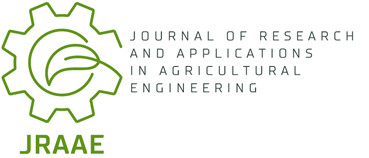Current issue
Online First
Archive
Instructions for Authors
Guide for Authors
Peer Review Policy
Research Ethics Policy
Ghostwriting and Guest Authorship
Copyright
Open Access Policy
Plagiarism
About the Journal
Aim and Scope
Scientific Board
Publisher
Editorial Board
Indexing in Databases
Personal Data Protection
Repository Policy
Contact
ORIGINAL PAPER
The Effect of Preliminary Processing of African Catfish on Mass Yield of Major Product Forms Compared with Carp
1
Department of Food Industry Processes and Facilities, Koszalin University of Technology, Poland
2
Gdynia, National Marine Fisheries Research Institute, Poland
These authors had equal contribution to this work
Submission date: 2024-11-25
Acceptance date: 2024-11-25
Online publication date: 2024-11-25
Corresponding author
Sylwia Mierzejewska
Department of Food Industry Processes and Facilities, Koszalin University of Technology, Poland
Department of Food Industry Processes and Facilities, Koszalin University of Technology, Poland
Journal of Research and Applications in Agricultural Engineering 2024;69(2)
KEYWORDS
TOPICS
ABSTRACT
The article compares the morphological structure of the skeletal and muscular systems of carp and catfish carcasses and discusses how this determines the acquisition of semi-finished products - culinary elements. The results of weight measurements of the elements obtained from the processing of catfish carcasses, such as gutted carcasses, headless carcasses, flap, trimmed fillets without skin are presented. The processing and measurements were carried out on 34 pieces of fish (weight 45 kg). The weight spread of individual fish in the study group from 630 g to 2160 g. Measurements were made with a division into three size groups of fish.
REFERENCES (14)
1.
Kuczyński M. 2019. Is there a possibility to increase the efficiency of African catfish breeding. Fish Industry Magazine. 5(131); 40-41.
2.
Diakun J., Domiszewski Z., M. Sencio M. 2019. African catfish - breeding potential, offer and commercial attractiveness. Fish Industry Magazine. 2(128)/2019; 53-56.
3.
Januszko I., J. Kałuża J., 2019. Fish and fish products in human nutrition – analysis of benefits and risks. Kosmos, 68, 2019, 269-281.
4.
Rario. 2015. Fish Fillet Catfish Processing Technology from Central Kalimantan, Indonesia. IOSR Journal of Environmental Science, Toxicology and Food Technology (IOSR-JESTFT) e-ISSN: 2319-2402,p- ISSN: 2319-2399.Volume 9, Issue 5 Ver. II (May. 2015), PP 18-25 www.iosrjournals.org.
6.
Domiszewski Z., Duszyńska K., Stachowiak E. 2020. „Influence of different heat treatments on the lipid quality of African Catfish (Clarias gariepinus). Journal of Aquatic Food Product Technology, 29/9; 886-900.
7.
Jamioł-Milc, D., Biernawska, J., Liput, M., Stachowska, L., & Domiszewski, Z. 2021. Seafood intake as a method of non-communicable diseases (NCD) prevention in adults. Nutrients, 13(5), 1422.
8.
Dowgiałło A. 2012. „ Carp mechanical processing”. National Marine Fisheries Research Institute, Gdynia; ISBN 978-83-61650-332.
9.
Pawlikowski B., Dowgiałło A. 2013: Technologie wykorzystania mechanicznie odzyskiwanego mięsa z karpii. Monografia nr 25, Wydawnictwo Uczelniane Politechniki Koszalińskiej ISSN 0239-7129, ISBN 978-83-7365-320-7.
10.
Pawlikowski B. 2022. Poradnik: Wykorzystanie nowoczesnych, kompleksowych technologii przetwarzania karpi w gospodarstwach akwakultury oraz zakładach przetwórstwa ryb. National Marine Fisheries Research Institute , Gdynia; ISBN 978-83-61650-27-7.
11.
Fatichov J.A., Diakun J., Skarbek E., Domiszewski Z. 2021: Conditions of African sharptooth catfish de-heading process. Technological Progress In Food Processing 31/58; 11-16.
12.
Project 2007: Kompleksowy system przetwarzania karpi na nowoczesne produkty spożywcze i paszowe. Program operacyjny „Sustainable development of the fishing sector and coastal fishing areas”. Co-financing agreement 00002-61724-OR1600005/10 2007 Project implemented by Koszalin University of Technology and National Marine Fisheries Research Institute in Gdynia.
13.
Project, 2019: Technologia obróbki mechanicznej karpi w gospodarstwach akwakultury i zakładach przetwórstwa ryb. Program operacyjny „Rybactwo i morze”. Co-financing agreement 00001-6521.2-OR1600001/18/19, Project implemented by Koszalin University of Technology and National Marine Fisheries Research Institute in Gdynia.
14.
Baryczka M.J., Skiepko N., Pomianowski J., Chwastowska-Siwiecka I., 2015. The effect of sex on the biometric characters and slaughter yield of african catfish (CLARIAS GARIEPINUS BURCHELL), Komunikaty Rybackie ISSN: 1230-641X.
We process personal data collected when visiting the website. The function of obtaining information about users and their behavior is carried out by voluntarily entered information in forms and saving cookies in end devices. Data, including cookies, are used to provide services, improve the user experience and to analyze the traffic in accordance with the Privacy policy. Data are also collected and processed by Google Analytics tool (more).
You can change cookies settings in your browser. Restricted use of cookies in the browser configuration may affect some functionalities of the website.
You can change cookies settings in your browser. Restricted use of cookies in the browser configuration may affect some functionalities of the website.



